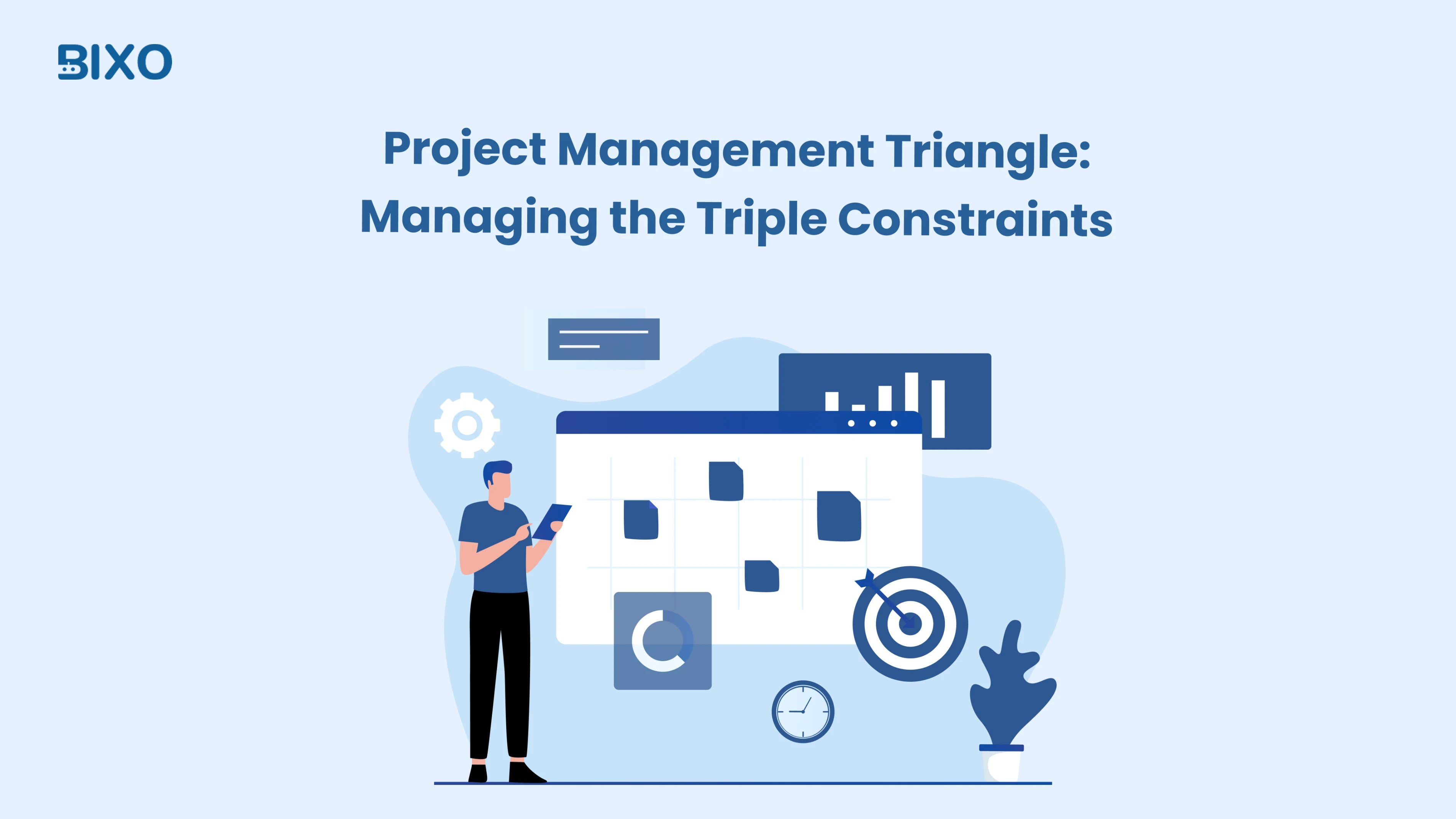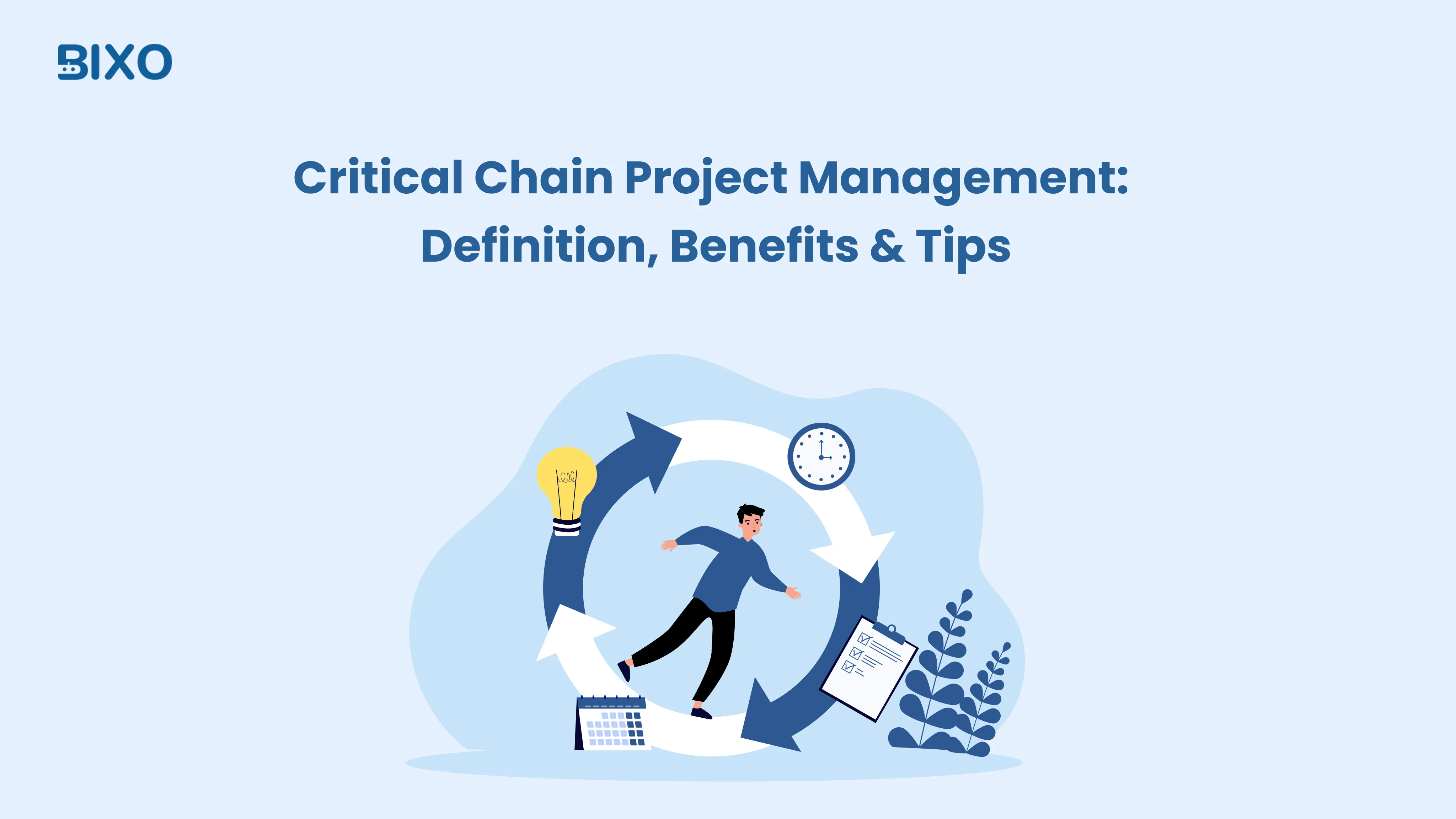
Table of Content
Focus on what matters. BIXO handles the rest!

Have you ever wondered how to clearly define what a project should produce? That’s where a project deliverable comes in. It is any tangible or intangible output that your project promises to deliver, helping your team and stakeholders know exactly what to expect. Understanding deliverables ensures your work stays focused and meets the project’s goals.
In this blog, you will learn what a project deliverable is, why it is important, and see clear examples to help you create and manage deliverables effectively.
What are project deliverables?
Project deliverables are the specified outcomes, results, or outputs that a team is meant to finish and deliver within a given deadline. These deliverables play a key role in measuring project progress and in supporting team efforts.
There are two types of Deliverables:
- Tangible- Such as reports, software, or hardware.
- Intangible- Like software updates, business plans, or marketing campaigns.
Why Are Project Deliverables Important in Project Management?
With the help of a project management tool, you can find it much easier to plan, assign, and track deliverables. It is easy to link them to your project milestones and needs, and get every detail covered. It helps you to track progress easily, keeps your team responsible, and improves team communication . By managing your deliverables and connecting them to clear goals when doing the project, you are creating a path to increased performance and delivery on time.
Types of Project Deliverables
Projects contain different types of deliverables depending on your project goals. Deliverables may either be finished products of the project, like a product launch or a finished website or internal deliverables like reports, drafts or process updates.
Understanding the types helps you organise your work, manage expectations and keep your project on track. These are the common types of project deliverables that you will come across.
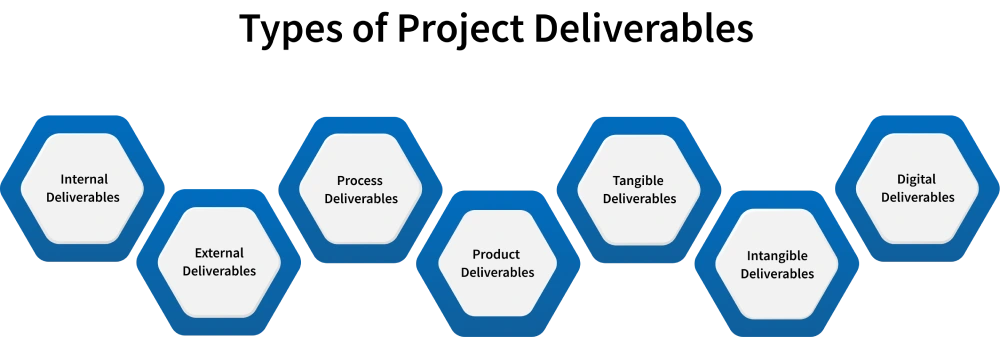
Internal Deliverables
Internal deliverables are items produced by your team to assist the project internally, such as a project plan, project schedule, or meeting notes. They do not share them with clients, but they are important to organise and accomplish important deliverables. Using project management software makes it simpler to monitor these tasks, allocate them, and ensure everything is under control.
External Deliverables
External deliverables are products that are delivered to clients or stakeholders outside the team, such as final products, reports or presentations listed in the project plan. These key project deliverables must meet expectations and deadlines. With project management software, you can track them efficiently to reach each important project milestone and drive project success.
Process Deliverables
Process deliverables are documents, plans, or steps that guide how the work is done throughout the project life cycle. Examples include workflow automation, approval checklists, or a detailed project schedule. They may not be the outcome, but these help keep things organised and make sure the work moves smoothly toward your project deliverables. They usually play a big role during the project planning and execution stages and are often tracked using project management tools.
Product Deliverables
Product deliverables are the final results created for the client or end-user, such as a website, app, or physical item. They usually reflect the core project objective and should align with the defined goals. In order to deliver a successful project, you will want to clarify what the deliverables clearly and keep them in sync with the overall project timeline. Appropriate tools can make your team attentive, control the process and execute each stage effectively.
Tangible Deliverables
Tangible deliverables are physical items you can see or touch, like printed documents, packaged goods, or hardware. These often have clear deadlines in your project schedule and are easy to track using project management tools, making them a key part of project deliverables in project management and an important component of completing a project successfully.
Intangible Deliverables
Intangible deliverables are the results that cannot be touched physically, e.g. a strategy, training and a software update. Even though they aren't physical items, they still play a big role in achieving your project goals. These are usually defined early in the project plan, connected to the bigger project objectives, and managed using tools during the project planning phase.
Digital Deliverables
Digital Deliverable is made and shared online, whether a video, design, report, or code. They’re usually listed in the project plan and delivered according to the timeline in the project schedule. Many project managers use tools to track them and ensure they match the project scope and goals for a successful project.
How to Identify Project Deliverables
Before figuring out what needs to be done, it’s good to know why it matters. Deliverables are not just any tasks; they are the actual things your team is striving to deliver, such as a completed design, an online site, or a final report. When you know these, the project goes more easily. Deliverables are the big wins your team is working toward. In this section, we’ll show you how to spot them early so everyone stays clear, focused, and ready to deliver.
Define the Project Scope
Start by getting clear on what the project is all about. Defining the project scope is just about getting everyone on the same page. It means being clear about what’s included in the project, what’s not, and what a successful outcome really looks like. When everyone understands that upfront, things run a lot smoother.
Focus on Project Objectives
Knowing exactly what your project aims to achieve makes everything clearer. When your team understands the goals, it’s easier to decide what deliverables matter most. Clear objectives help keep everyone moving in the same direction and make it simple to measure success
Break Down the Work
Breaking things down makes it easier to spot what needs to be delivered at each step and keeps the team organised. Everyone can focus on one thing at a time, and the tasks don't get mixed up and get all over the place.
Identify Specific Deliverables
Think of this step like making a checklist of what you’ll actually hand over when the project’s done. It could be anything: a final report, a working app, a slide deck, or even a set of designs. The key is to be super clear. When everybody knows what should be delivered, there are fewer last-minute changes and less confusion, and the entire process seems a lot easier.
Check with Stakeholders
Before you move ahead, take a moment to talk to the people who are involved in or affected by the project, like your client, HR manager, or team lead. Ensure the list of deliverables you include is aligned with what they want. A simple verification will prevent misunderstandings in the future and ensure that the people are on the same page initially.
Look at Internal vs. External Deliverables
Not all deliverables are meant for clients; some are just for your team. Internal deliverables are things used to keep your team organised, such as a project plan or progress report. External deliverables are what you give to the clients or other stakeholders, e.g. a final product, a presentation, a design file. Knowing the difference helps you manage expectations and keep everything on track, both behind the scenes and out in the open.
Link Deliverables to KPIs
It is not only about completing tasks, but also seeing whether they are really important. And this is where KPIs (Key Performance Indicators) come in. When you connect your deliverables to KPIs, you can measure how well your project is really doing. As an example, when providing a new site, a corresponding KPI could be the amount of traffic to the site after its launch. Linking the two helps you track progress and prove the value of your work.
How to Manage Project Deliverables?
Deliverables management is a way to monitor what, when, and by whom something should be done. It is a matter of being organised, having very clear expectations and ensuring nothing slips through the cracks. You can have your project going on in a healthy way by having the right approach.
These are some of the key steps that can help you manage deliverables effectively:

Define Each Deliverable Clearly
Be as clear as possible about what each deliverable is. Rather than simply stating, create a report, it is important to say, submit a 10-page performance report with visuals, by Friday. The better the details are, the clearer it becomes to everyone to know what to do and how to determine success.
Assign Ownership
Every deliverable needs someone to take the lead. When one person is clearly responsible, things don’t fall through the cracks. It is not about doing it alone, it means they will take steps to ensure that the job is processed and finished in time.
Set Realistic Deadlines
Discuss with your project team to get an idea of what needs to be done and how much longer it will take. Make sure the deadlines match the project requirements. When timelines are clear and realistic, it is much easier to track project deadline and keep everything moving smoothly.
Track Progress Regularly
As you execute your project, you should see how each of the deliverables is being processed. These Regular updates help you to stay on track, fix problems early, and make sure nothing is missed. This is especially important for external project deliverables that are meant for clients or stakeholders who need to be delivered on time and done right.
Review and Approve Before Closing
Before ending a project, check each deliverable to make sure it’s fully complete and meets the project's needs. Deliverables show what has been completed and provide useful results. Depending on the project, you may need someone (like a client or manager) to check and approve the work. If the deliverables are clearly defined from the start, this step becomes much easier.
Examples of Project Deliverables
Project deliverables help show real progress and keep everyone on track. They’re the actual results that your team is working towards. When you define the deliverables clearly, it’s easier to manage the tasks and meet your goals. Deliverables provide value to your team, your clients, or both.
Below are some common examples of project deliverables you might come across in real-world projects:
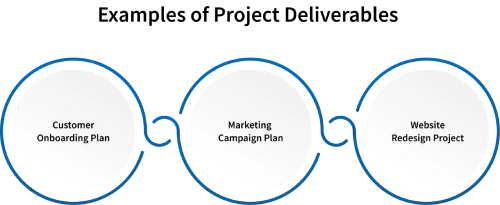
Customer Onboarding Plan
This deliverable helps new customers get started smoothly with your product or service. It might include a welcome guide, a setup checklist, training sessions, or other resources. A clear onboarding plan not only improves the customer experience but also builds trust and keeps them engaged from the beginning.
Marketing Campaign Plan
The deliverables explain to you how to plan and promote something (like a product or service). It usually includes a goal like who you’re trying to reach, what platforms you’ll use, and when each part of the campaign will be launched. A clear plan helps the team stay organised and makes sure nothing is missed.
Website Redesign Project
This deliverable involves improving how a site looks, its structure, and the function of a website. It includes page designs, better navigation, faster loading times, and mobile-friendly layouts. A redesign plan helps the team know what changes need to be made and ensures the new site meets the user and business needs.
From Planning to Deliverables: How BIXO Makes Sure Your Projects Flow Smoothly
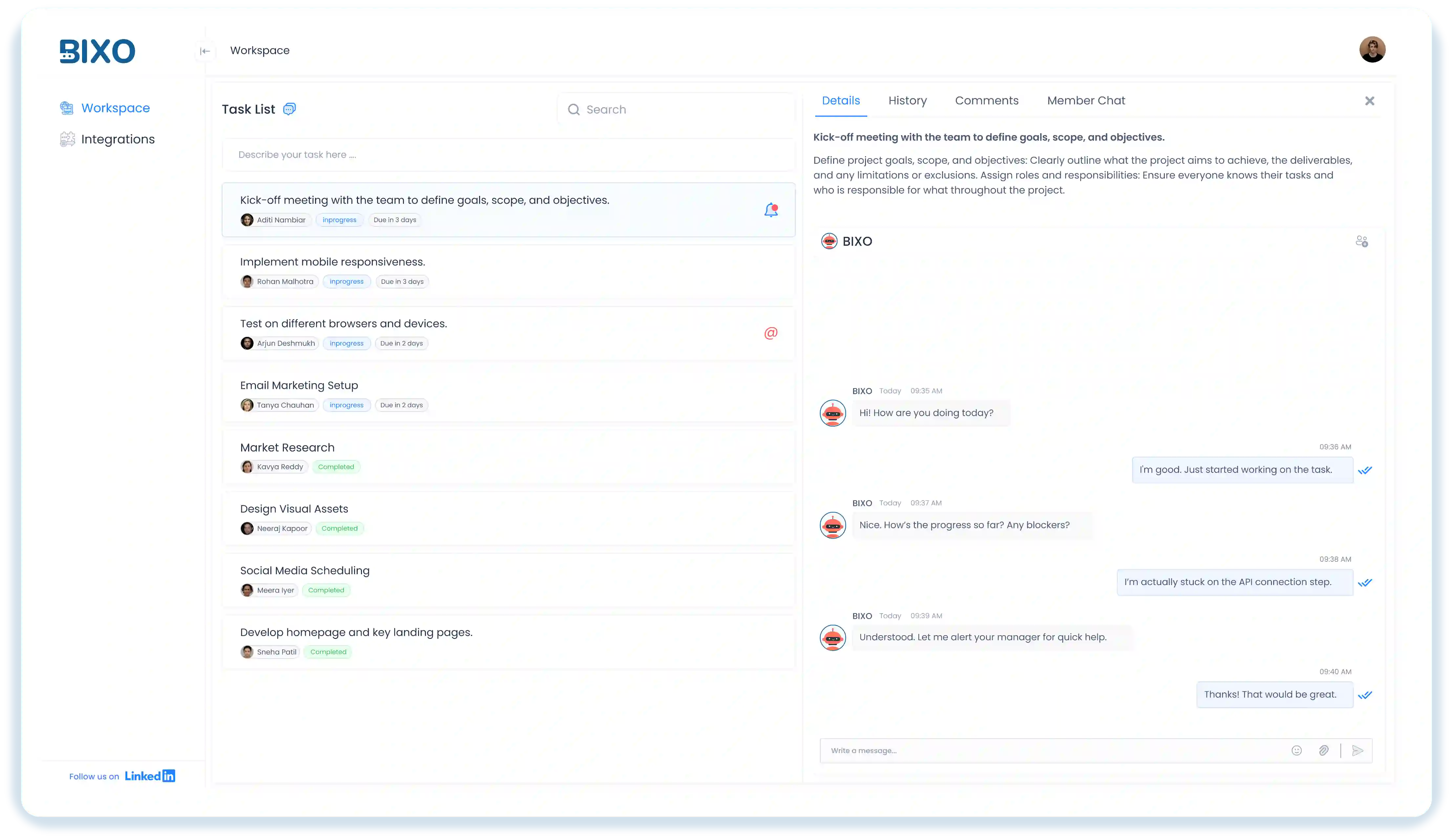
Managing project deliverables can be challenging, especially when you have multiple tasks, deadlines, and stakeholders to coordinate. This is where BIXO can make a real difference. It is an AI-powered manager tool designed to help you plan, track, and manage all your deliverables from start to finish.
With BIXO, you can clearly define each deliverable, assign tasks to the right team members, and monitor progress in real time. Its smart features help you spot delays, manage changes, and keep everyone aligned with project goals. By bringing everything together in one platform, BIXO ensures your team stays organised, focused, and on track, helping you deliver every output successfully and on time.
Conclusion
A clear understanding of project deliverables is essential for any successful project. They define what your project will produce, keep your team focused, and ensure expectations are met. By planning and managing deliverables carefully, you can avoid confusion, stay on schedule, and achieve better results. With tools like BIXO , you can streamline the process, track progress, and ensure every deliverable is completed efficiently and on time, making your projects more organised and successful.
FAQs
Internal deliverables are for your team (like a project plan or internal report), while external deliverables are shared with clients or stakeholders (like a final product or campaign).
Use a project management tool like BIXO to monitor progress, check deadlines, and keep your team aligned. Regular updates and reviews help avoid delays.
In case a deliverable is behind, discuss it with your team immediately. Find out what the cause of the delay is, try to make adjustments to the plan where possible, and keep the stakeholders updated so that it does not become a bigger issue later.
Yes, there are some cases where deliverables must be changed depending upon feedback, new goals or changes. In this case, you should update your plan and inform your team members and stakeholders.
Get a demo of BIXO
Recommended Blogs

Top 7 AI Project Management Assistants to Boost Productivity
Explore the top 7 AI Project Management Assistants in 2025 and learn how to choose the right one to boost productivity, streamline work, and scale teams.
 Tarun Kumar Reddy Atmakuru |
Tarun Kumar Reddy Atmakuru |
 Oct 17, 2025
Oct 17, 2025

